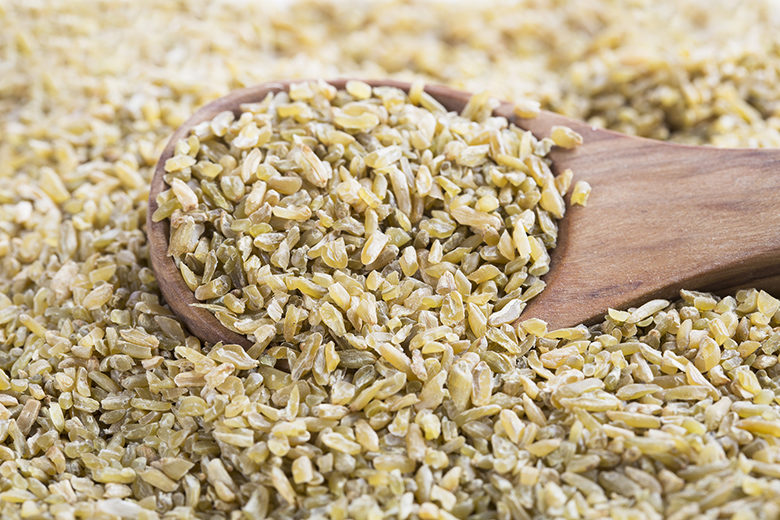
A new class of whole grains is gaining popularity and you will want to know how to pronounce “freekeh” with finesse. Freekeh is one of many “ancient grains” attracting attention for its nutritional value and culinary potential.
Ancient grains (also called Old World grains) include members of the grass family, such as kamut and spelt, as well as seeds such as quinoa and amaranth, but most people refer to them all as grains. These seeds and grasses are considered “ancient” because they have existed unmodified for hundreds of years, unlike our modern corn, rice and wheat, which have been bred to better suit our taste. These new-ancient grains can be incorporated into our meals similarly to how we prepare rice or oats as cereal or in salads and side dishes.
Freekeh is pronounced “free-kah” (not freaky!) and originated in the Middle East. Freekeh is actually wheat that gets harvested while still young and green, then roasted and rubbed yielding a nutty, smoky flavor and firm, chewy texture. Opening a package of freekeh reveals an earthy, grass-like aroma, similar to fresh hay. Remember, this is not a gluten-free grain as it is derived from wheat, but it sure has a lot to offer nutritionally.
Freekeh deserves a place in your cupboard because of its fantastic health profile, including a high-protein, fiber (including prebiotics), vitamin and mineral content while remaining low on the glycemic index scale (43), meaning it will not spike your blood sugar as quickly as some other types of carbohydrates. Include this grain in your diet for added lutein, zeaxanthin, calcium, iron, magnesium and zinc.
If you see freekeh in your local grocery or health store, pick up a package to experiment with. It can be used in salads, bean dishes, stuffing, soup, as a hot cereal or give the recipe below a shot. You can find more easy freekeh recipes on Epicurious and Bon Appetite, or of course, on many of your favorite blogs. Happy Freekeh!
Sources:
- Distribution of lutein, zeaxanthin, and related geometrical isomers in fruit, vegetables, wheat, and pasta products
- Continuing Education: Identifying whole grains
- Whole Grains Council
- LA Times, Ancient grains: The best thing since sliced bread?
Fruity Freekeh
Recipe developed by Ginger Hultin, MS, RD, LDN
Serves 4
Try this simple, hearty side dish for the holidays!
Ingredients
4 teaspoons olive oil, divided
1 medium yellow onion, diced
2 cups freekeh
5 cups vegetable broth (could also use chicken broth if desired)
3 cups butternut squash, peeled and cut into ½ inch cubes
1 cup dried cherries or cranberries
1/2 cup pecans, chopped
Salt and freshly ground pepper to taste
1 orange, zested
Instructions
- In a large pot, heat 1 teaspoon olive oil over medium-high. Add diced onion, stirring often until soft, about 3 minutes.
- Combine freekeh and broth in a large pot. Bring to a boil then reduce heat to low, cover pot and simmer for 25-30 minutes or until freekeh is tender.
- While the freekeh cooks, toss squash with 1 tablespoon olive oil in a medium bowl. Spread on a parchment-lined cookie sheet and bake at 400 degrees for 20 minutes or until tender.
- Stir cooked butternut squash, cranberries or cherries, and pecans into warm freekeh. Add salt and freshly ground pepper to taste. Garnish with orange zest. Serve warm or cold.
Nutritional info per serving (about 3/4 cup per serving): Calories: 336; Carbohydrate: 37 g; Fiber: 8 g; Protein: 12 g; Total fat: 17 g; Saturated fat: 2.5 g; Sodium: 958 mg; Star nutrients: Vitamin A (225% DV), calcium (9% DV), Vitamin C (82% DV), Iron (15%DV)





